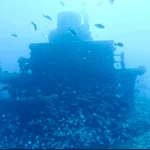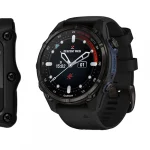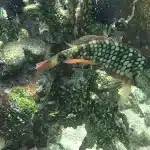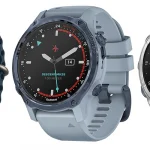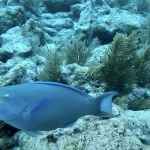Understanding Joe’s Tug: Key West’s Hidden Gem
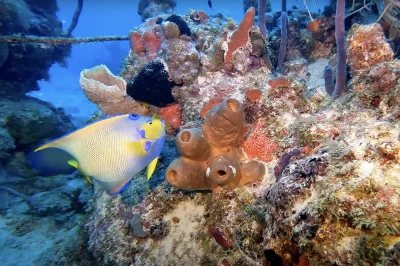
Table of Contents
- Understanding Joe’s Tug: Key West’s Hidden Gem
- How to Prepare for a Dive at Joe’s Tug
- Avoiding Pitfalls: Common Diving Mistakes at Joe’s Tug
- Photography Tips for Joe’s Tug: Capturing the Unique
- Myths vs Reality: Is Joe’s Tug for Everyone?
- Seasonal Changes and Trends at Joe’s Tug
- Benefits of Night Diving at Joe’s Tug
- Comparing Joe’s Tug to Other Key West Dive Sites
Introduction
Key West is renowned for its stunning marine life and vibrant scuba diving scene. Among its treasures, Joe’s Tug stands out as an accessible wreck, providing unique opportunities for photographers and divers alike. This guide explores the depths and captures the essence of this captivating dive site.
Understanding Joe’s Tug: Key West’s Hidden Gem
To prepare effectively for a scuba dive at Joe’s Tug in Key West, follow this structured plan based on the site’s characteristics and safety guidelines:
Certifications and Experience
- Minimum Certification: Open Water Diver (OWD) certification is sufficient for this intermediate-depth dive, typically reaching 60–65 feet.
- Experience Adjustment: While the dive is suitable for novices, advanced divers may appreciate the deeper exploration and navigation of the wreck structure created by Hurricane Georges.
Booking a Guided Dive
- Choose Reputable Operators: Dive shops such as Key West Dive Center or Finz Dive Center offer guided tours, ensuring safety and maximising encounters with marine life.
- Confirm Logistics: Verify pickup times, equipment rentals, and dive briefings beforehand to ensure a smooth experience.
Equipment Preparation
- Wetsuit/Dive Skin: A 3mm thickness is recommended for thermal comfort, as water temperatures range from 78°F to 82°F.
- Dive Computer: Essential for tracking depth and time, especially at the maximum dive depth of 60-65 feet.
- Tank and Regulator: Standard scuba gear with a sufficient air supply for a dive duration of 30-45 minutes.
- Lights and Strobes: Useful for enhanced visibility and signalling, particularly beneficial during night dives.
- Weight Belt: Adjust the weights appropriately for deeper dives and potential currents.
Dive Plan & Safety Practices
- Buddy Check: Always inspect each other’s gear, including regulators, BCDs, and tanks.
- Depth and Temperature: Monitor water temperature, as warm waters can obscure signs of cold stress.
- Navigation: Utilise GPS coordinates 24°27.850’N, 81°44.270’W to locate the wreck effectively.
- Marine Life Interaction: Do not touch coral, moray eels, or marine life like the famous goliath grouper known as “Elvis” to preserve the ecosystem.
- Emergency Protocol: Carry a signalling device (like a surface marker buoy) and familiarise yourself with buddy separation procedures.
Post-Dive Care
- Safety Stop: Conduct a 3-5 minute safety stop at 10-15 feet to reduce the risk of decompression sickness.
- Hydration & Rest: Rehydrate, avoid alcohol, and refrain from flying for at least 24 hours after diving.
- Log the Dive: Record essential details such as depth, time, and observations for future reference.
Additional Tips
- Night Diving: Requires specialised certification and opens up opportunities to spot nocturnal creatures, enhancing the diving experience.
- Photography: Ideal conditions for capturing macro shots of marine life nestled in the wreck’s coral and sponges.
- Weather Watch: Always check forecasts as abrupt weather changes can occur, affecting dive conditions.
By following this guide, divers can safely enjoy the vibrant marine life and historic wreck of Joe’s Tug while adhering to best practices.
How to Prepare for a Dive at Joe’s Tug
Diving at Joe’s Tug in Key West offers a fantastic opportunity to explore a sunken shrimp boat teeming with marine life. However, despite its reputation as a great dive site, divers often make common mistakes that can detract from their experience or even pose risks. Here are some frequent pitfalls and how to avoid them:
1. Inadequate Pre-Dive Checks
Divers sometimes skip essential safety protocols such as buoyancy control tests and equipment inspections. At Joe’s Tug, where the depth reaches 65 feet and currents can affect stability, neglecting these steps can lead to losing gear or struggling to maintain buoyancy.
2. Overconfident Wreck Penetration
While Joe’s Tug is beginner-friendly, the accessible hull can tempt divers to explore further than their training allows. This behaviour often stems from the Dunning-Kruger effect, where inexperience leads to overestimating one’s skills. Always stick to your training limits and avoid entering enclosed spaces unless adequately equipped to do so.
3. Poor DSMB Management
Improper handling of Delayed Surface Marker Buoys (DSMB) can result in tangled lines during ascent. The good visibility at Joe’s Tug, around 50 feet, may cause divers to neglect proper buoy usage, leading to drifting from the dive boat or entanglement, which increases collision risks.
4. Ignoring Marine Life Boundaries
The wreck is home to varied marine life, including moray eels and barracuda. Mistakes such as touching or feeding these creatures can provoke defensive reactions and harm their ecosystem. Always observe marine life from a distance to ensure both your safety and their well-being.
5. Mismanaging Night Dives
Night dives at Joe’s Tug can be disorienting. Divers may lose track of their dive light beam, become separated from their group, or forget to monitor their air supply. Given the wreck’s structure, challenges can escalate if navigation aids like a backup light or a compass are not utilised.
6. Surface Procedure Errors
One common error is removing regulators too early while boarding the boat. This mistake increases the risk of swallowing seawater or dropping essential gear, particularly in Key West’s choppy waters, making it vital to keep your regulator in place until fully aboard.
7. Overlooking Air Reserves
Although Joe’s Tug is at a manageable depth, divers may underestimate their air consumption due to exploration. Rapid ascents from extended dives or slow navigations can result in low-air emergencies. It is important to regularly check your air gauge and calculate your return time to the surface.
Avoiding Pitfalls: Common Diving Mistakes at Joe’s Tug
Joe’s Tug in Key West is an underwater paradise that offers scuba diving enthusiasts not only the thrill of exploration but also a unique photography experience. To make the most of your dive and capture stunning images, consider the following insights tailored for this exceptional dive site.
Visibility and Conditions
Visibility at Joe’s Tug can reach up to 50 feet, providing excellent conditions for underwater photography. This crystal-clear water is perfect for capturing intricate details of marine life and the wreck itself. However, divers should be aware that visibility can fluctuate with changing currents or precipitating weather conditions. Always be prepared to adjust your camera settings to accommodate these changes, as clarity might affect exposure and colour balance.
Photo-Ready Subjects
- Marine Life: Expect to encounter diverse species, including Elvis, the renowned goliath grouper, moray eels, barracudas, and vibrant schools of grunts and sergeant majors.
- Wreck Details: The shrimp boat’s well-preserved hull, aft deck, and coral-encrusted superstructure are rich with photographic opportunities. The wreck’s layout, with the bow and stern approximately 30 feet apart, offers various angles for your shots.
- Coral and Sponges: The surrounding hard and soft corals provide colourful backdrops that enhance close-up photography of marine creatures.
Technical Tips
- Shoot in Burst Mode: Capture around 300 images per hour to account for the movements of marine life and varying underwater stability.
- Adjust for Depth and Light: At about 65 feet deep, consider using strobes to counteract the blue tones prevalent in deeper water, which enhances the vibrancy of your images.
- Minimise Disturbance: Use two fingers to gently push off surfaces, avoiding the stirring of sediment that could obstruct visibility.
Night Diving
For those adventurous enough to dive at night, Joe’s Tug transforms into a lively scene featuring nocturnal wildlife. Utilise red lights or adjust your camera settings to highlight bioluminescent creatures, such as lobsters and crabs, elegantly navigating the wreck’s features.
Site-Specific Insights
- The wreck rests at a manageable depth of 65 feet (20 meters), making it accessible to both novice and experienced divers.
- Be mindful of post-storm conditions, as the wreck structure may occasionally shift due to environmental factors.
Etiquette
When taking photographs, practice good diving etiquette. Avoid overcrowding popular photo subjects; rotate turns to enable all divers a chance to capture their memories while ensuring minimal disruption to the ecosystem.
Photography Tips for Joe’s Tug: Capturing the Unique
The Vessel’s True Identity and Sinking
Contrary to its name, Joe’s Tug was not a tugboat but a steel shrimp cutter originally slated to be sunk as an artificial reef near Miami. Its fate shifted in 1986 when thieves stole it from Stock Island’s harbour to dismantle it. During the attempted theft, the vessel sank near the pier, creating an accidental artificial reef. Later, Hurricane Georges (1998) severely damaged the wreck, tearing it apart and scattering debris across the seafloor.
Myth: The sinking was orchestrated by a “rum-soaked fisherman” or “local pirate”.
Reality: The sinking resulted from theft and mishandling, not deliberate human action.
Diving Joe’s Tug: Myth vs. Reality
| Aspect | Myth | Reality |
|---|---|---|
| Wreck Integrity | An intact shipwreck. | The structure is fragmented, with the wheelhouse collapsed and stern/bow separated by 10 meters. |
| Diving Difficulty | Only for advanced divers. | Accessible to all levels with guided tours, though wreck penetration requires training. |
| Marine Life | Rare or predictable sightings. | Known for large aggregations of grouper, tarpon, and moray eels, with occasional turtles and eels. |
General Scuba Diving Myths and Realities
While not specific to Joe’s Tug, common misconceptions persist:
- Myth: Scuba diving is inherently dangerous.
Reality: Diving is safe when practised within established guidelines and with proper training. - Myth: Diving requires advanced skills for most sites.
Reality: Many reefs and shallow wrecks (like Joe’s Tug) are suitable for beginners when guided, though penetration diving demands specialised training.
Key Features of Joe’s Tug Dive Site
- Depth: ~20 meters (66 feet), with visibility up to 30 meters.
- Access: Requires boat transfers (~20-minute ride).
- Hazards: Limited current, but remnants like broken ladders and railings demand caution.
For divers at Joe’s Tug, the “mythic” allure of its tumultuous history contrasts with the reality of a dynamic, biodiverse reef teeming with marine life.
Dive Computers
- Diving Computers for Female Divers
- Wreck Diving Computers
- Beginner Diving Computers
- Low-Light Diving Computers
- Technical Diving Computers
- Freediving Computers
- Underwater Photography Diving Computers
- Cold-Water Diving Computers
- Travel-Friendly Diving Computers
- Multi-sport Diving Computers
- Budget-Friendly Diving Computers
- Advanced Recreational Diving Computers
- Smartwatch-Compatible Diving Computers
- Child-Friendly Diving Computers
- Military or Professional Diving Computers
Myths vs Reality: Is Joe’s Tug for Everyone?
Seasonal Changes and Trends at Joe’s Tug
Joe’s Tug, a popular dive site in Key West, offers divers an intriguing underwater experience. However, seasonal changes can significantly affect dive conditions, influencing factors such as visibility, currents, and marine life. Understanding these impacts can help divers plan their excursions effectively.
Visibility and Water Clarity
Generally, visibility at Joe’s Tug is excellent, often reaching up to 50 feet. However, seasonal variations can lead to fluctuations in water clarity. During the wet season, which typically extends from June to November, heavy rainfall and storms can stir up sediments, decreasing visibility temporarily. After events like hurricanes, the sedimentation in the water can be particularly pronounced, as seen with the structural impacts from Hurricane Georges, which damaged the wreck itself.
Currents and Weather Patterns
This dive site is characterised by limited currents, making it accessible for divers of all skill levels. However, seasonal weather patterns can introduce variability. Consider the following:
- Winter (December–February): Conditions are generally calmer, providing clearer waters and better visibility.
- Summer (June–November): Increased storm activity during this period can stir sediments and potentially strengthen currents. Nonetheless, Joe’s Tug sits at a depth of around 20 meters and features a relatively stable sandy bottom, which helps mitigate extreme currents.
Marine Life and Seasonal Variations
While specific seasonal changes in marine life at Joe’s Tug are not well-documented, general patterns in the Florida Keys suggest interesting trends:
- Summer months: Warmer waters attract surface feeders, while nocturnal dives can reveal crabs and lobsters emerging at night.
- Winter months: Cooler water temperatures may influence species distribution, yet the ecosystem remains robust with resident creatures like moray eels and groupers.
Storm-Related Impacts
Storms present inherent risks, particularly during hurricane season (June to November). Historical evidence of storm damage, such as the implications of Hurricane Georges in 2004, emphasises the potential for structural instability and debris in the aftermath of a storm. It is advisable for divers to keep an eye on weather advisories and seasonal storm forecasts to ensure safety while diving.
Overall, while direct seasonal data specific to Joe’s Tug may be limited, general trends indicate improved diving conditions during the winter months and potential visibility issues due to storms in the summer and autumn. Divers are encouraged to plan their trips accordingly to take advantage of the best possible conditions.
Seasonal Changes and Trends at Joe’s Tug
Benefits of Night Diving at Joe’s Tug
Night diving at Joe’s Tug reveals a distinct ecosystem dominated by nocturnal creatures not seen during the day. Small crabs and lobsters emerge to forage, navigating the wreck’s decks and hulls under dim lighting conditions. These sightings offer a unique perspective on marine behaviour, as many crustaceans retreat to protected areas during daylight hours.
The dive site showcases a dynamic underwater light show. Coral and sponges may exhibit biofluorescent properties, glowing in greens, reds, and purples when illuminated by dive lights. Additionally, disturbances in the water trigger glowing plankton trails, creating electric-blue accents against the darkness.
The wreck supports a rich biodiversity, including:
- Moray eels and the famous goliath grouper “Elvis”.
- Schools of grunts and sergeant majors that frequent the hull.
- Occasional appearances of turtles and barracuda, which are less skittish at night.
The site typically offers excellent visibility (up to 50 feet), aiding divers in observing marine life detail during low-light conditions. The wreck’s split structure (bow and stern separated by 30 feet) simplifies navigation, allowing focused exploration of accessible hulls and decks.
Night diving amplifies the visual drama of coral encrustations and marine activity. Dive lights highlight vibrant colours of sponges and hard/soft corals, while the contrast between artificial light and natural darkness creates striking imagery.
At 65 feet depth, Joe’s Tug accommodates both intermediate and advanced divers while maintaining manageable conditions for novices guided by professionals. This accessibility ensures a safe yet immersive experience.
For an unforgettable encounter with nocturnal wildlife and illuminated underwater landscapes, Joe’s Tug stands out as a premier night-diving destination in the Florida Keys.
Benefits of Night Diving at Joe’s Tug
Comparative Insights on Joe’s Tug and Key West Diving Spots
Joe’s Tug, a popular wreck dive site located approximately 7 miles southeast of Key West, is renowned for its vibrant marine life and accessibility, making it an excellent choice for novice and intermediate divers. The wreck, originally a 75-foot steel shrimp boat, lies at a depth of 65 feet (20 meters) and often features visibility ranging from 20 to 30 meters, providing a nearly perfect environment for underwater photography. With limited currents and an open structure, Joe’s Tug stands out among Key West’s dive sites, but how does it stack up against others in the area?
To facilitate a better understanding of Joe’s Tug’s offerings, here’s a comparative analysis using a hypothetical framework that includes various Key West sites known for their diving experiences:
| Criteria | Joe’s Tug | Other Key West Sites (Examples) |
|---|---|---|
| Primary Focus | Wreck exploration | Reef diving, drift dives |
| Depth Range | Intermediate (20m) | Shallow reefs (5–15m), deeper dives (>30m) |
| Marine Life | Moray eels, groupers, schooling fish | Turtles, stingrays, tropical fish (varies by site) |
| Diving Challenges | Wreck penetration (requires caution) | Current navigation, confined spaces, buoyancy challenges |
| Visibility | 20–30m (excellent for photography) | Varies; some reefs may have lower visibility |
The structured comparison framework indicates that while Joe’s Tug is celebrated for its wreck diving opportunities, other sites may provide different experiences, such as vibrant coral reefs or unique marine species. Divers often find that Joe’s Tug allows for easy navigation and exploration of intact structural elements, suitable for varied skill levels.
Key Tips for Diving Joe’s Tug
- Wreck Safety: It is essential to avoid entering the hull without proper wreck diving certification or guidance to ensure safety.
- Night Dives: Consider night diving to experience the nocturnal marine life that emerges, such as lobsters and other critters.
- Accessibility: Guided dive tours, such as those from Key West Dive Center, are recommended for the best experience.
By understanding how Joe’s Tug compares to other dive sites, divers can better plan their excursions, ensuring a fulfilling underwater adventure tailored to their skill level and interests.
Comparing Joe’s Tug to Other Key West Dive Sites
Scuba Diving & Photography Tips for Joe’s Tug, Key West
Joe’s Tug, located 7 miles southeast of Key West at a depth of 65 feet, is a 75-foot steel-hulled shrimp boat split into two 30-foot-apart sections. The site features excellent visibility of approximately 50 feet and boasts diverse marine life, including goliath grouper, moray eels, and various schools of fish.
Photography Tips
Lighting & Composition
- Use external lights: Natural light diminishes at 65 feet; using strobes or video lights is essential to illuminate marine life and structures. Position your lights carefully to avoid backscatter from suspended particles.
- Frame the wreck: Utilise the ship’s hull and the thriving coral growth for dynamic compositions. Shoot through the intact structures like the stern or bow for creative angles.
- Capture marine life: Approach subjects slowly (e.g., Elvis the goliath grouper) to prevent startling them. Consider employing a slower shutter speed or higher ISO settings to capture motion in schools of fish.
Night Dive Considerations
- Adapt equipment: Use red-light filters during night dives to preserve your night vision and avoid startling nocturnal creatures like crabs and lobsters.
- Strobe timing: Sync your strobes with rapid-fire shots to freeze bioluminescent activity or the sparklers created by shrimp.
Gear & Safety
- Wide-angle lenses: These are ideal for capturing entire wrecks or large schools of fish effectively.
- Macro shots: Focus on the intricate details of coral, sponge formations, or small creatures such as crabs.
- Buoyancy control: Maintain neutral buoyancy to avoid touching the wreck or stirring up sediment. Be sure to follow no-touch policies to protect the reef and its inhabitants.
Key Reminders
- Dive certification: Ensure you possess the proper qualifications for deeper dives at 65 feet and are competent in navigating a split wreck.
- Respect the environment: Do not touch coral, disturb marine life, or feed wildlife. Such practices are crucial for preserving the marine ecosystem.
For optimal photographic results, visit during peak visibility periods or opt for night dives to witness and capture rare nocturnal behaviors.

